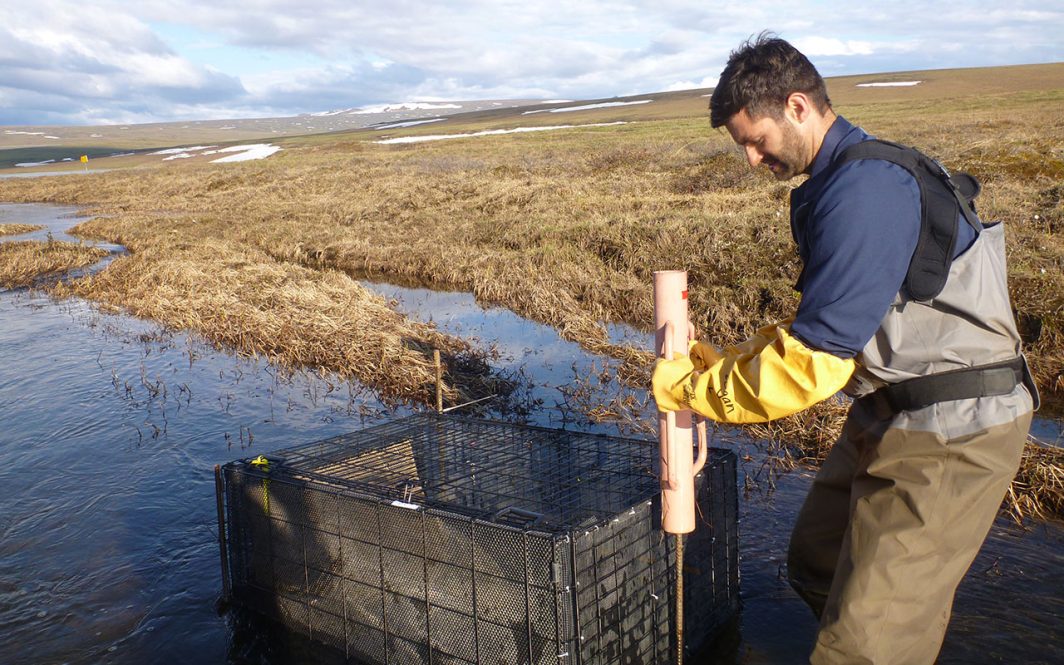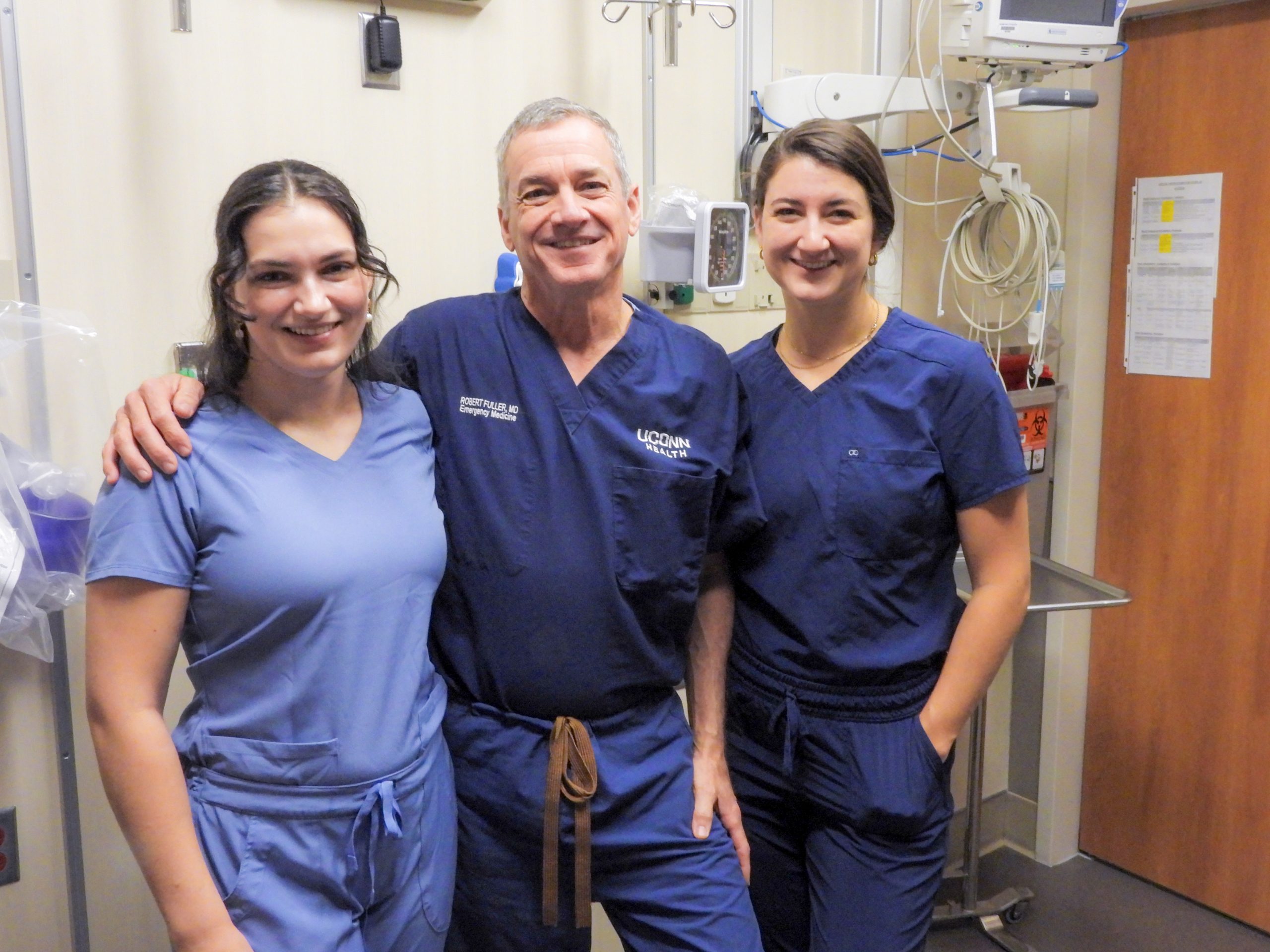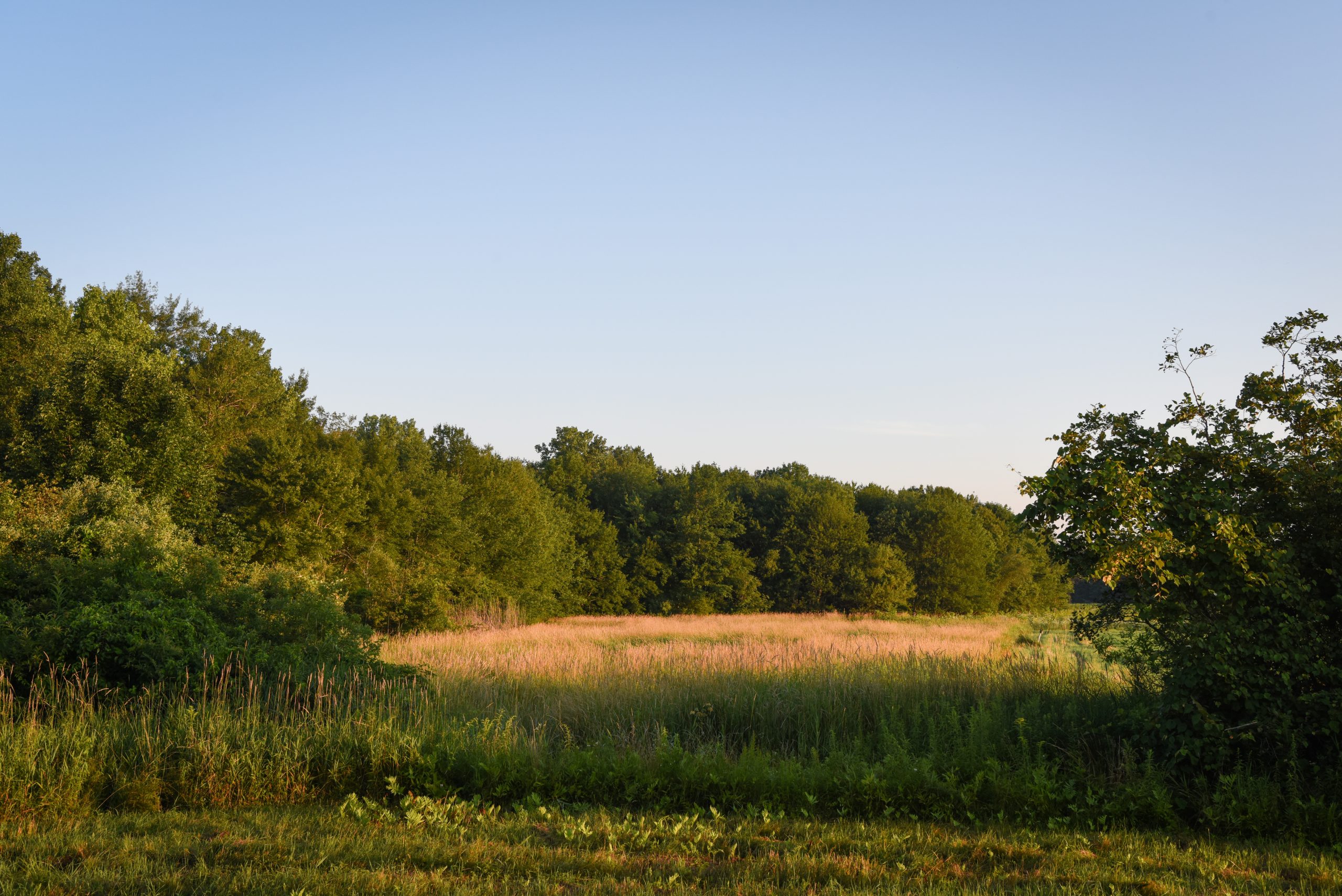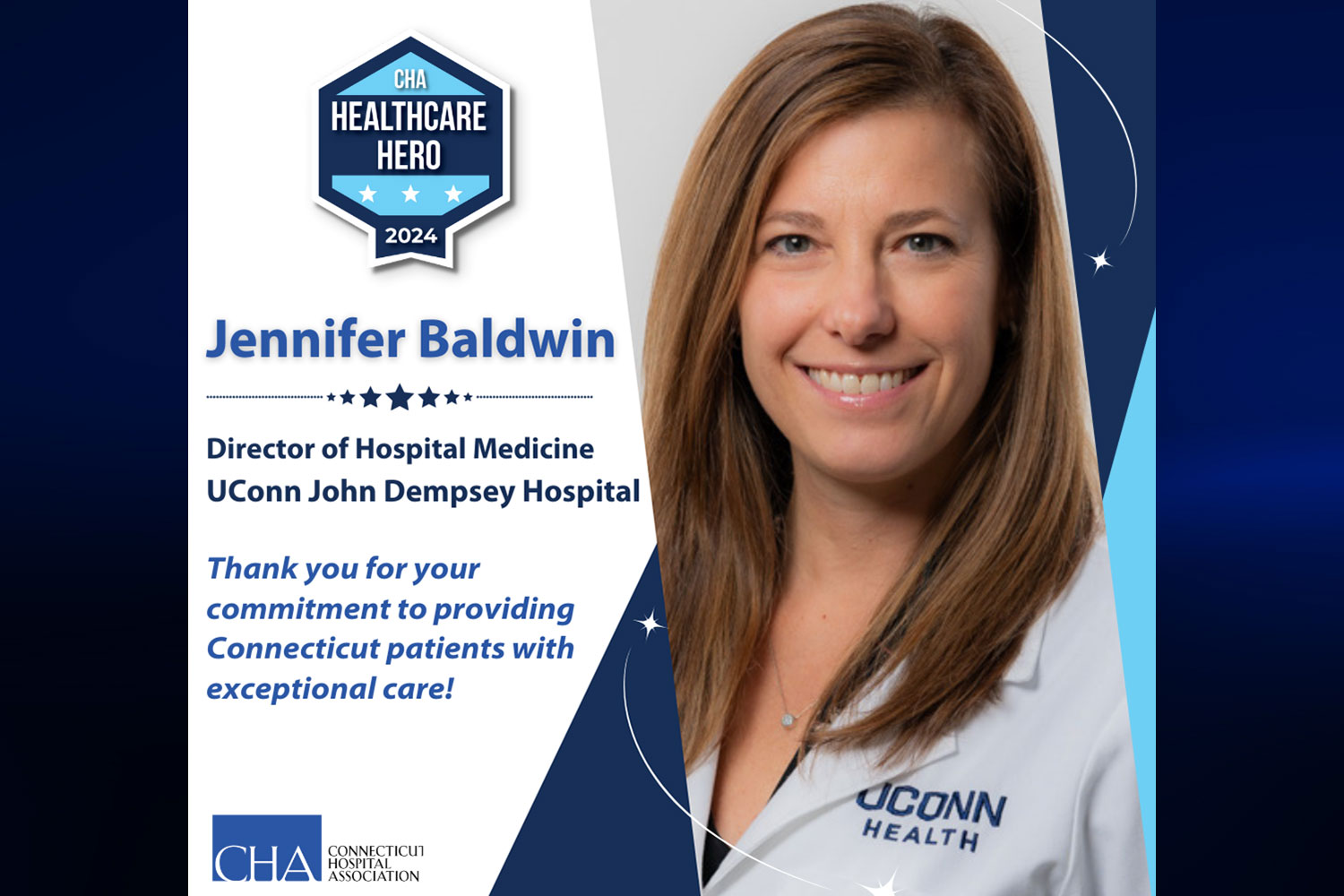As the planet warms, ecosystems are changing quickly, especially in the Arctic where temperatures are rising at nearly four times the global rate. Will Arctic ecosystems fall apart amidst this shift, muddle along in a diminished state, or adapt to keep pace with climate change?
That’s the big question at the center of a new National Science Foundation-funded institute led by researchers at Woodwell Climate Research Center, UConn, and Columbia University. The Evolving Meta-Ecosystems (EvoME) Institute is one of four major initiatives awarded $15 million each through the NSF’s Biology Integration Institute (BII).
UConn professor of ecology and evolutionary biology Mark Urban will co-lead the project, along with UConn scientists Jill Wegrzyn, Rachel O’Neill, Cory Merow, and Dan Bolnick. UConn contributors will work with experts in diverse disciplines from 14 institutions on the project over the next six years.
“Our larger goal is to come up with a more holistic view of ecosystem extending across time, space, disciplines, and ecosystems that we can use in forecasting the effects of climate change on the Arctic,” says Urban, who is founder and director of UConn’s Center of Biological Risk. “There are a lot of synergies here that will help us forecast the future. It will also enhance our ability to work together and learn from one another to answer these questions.”
Securing the coveted NSF funding was a huge win for the project. Urban quarterbacked the proposal-writing process with the support of a separate $100,000 grant from UConn’s Convergence Awards for Research in Interdisciplinary Centers (CARIC). The Office of the Vice President for Research (OVPR) initiative supports the development of collaborative interdisciplinary teams attempting bids for major federally funded initiatives, such as research centers like BII.
“Centers are bigger,” says Matthew Mroz, research development services manager at OVPR. “In order to be competitive for centers, you need to start acting like a center, which often have add-on components to the research, such as educational outreach. We created CARIC to help fund that kind of work, up to $150,000 per year for three years, to start funding the things that are the connective tissue of the project.”
Urban is no stranger to collaboration, but the EvoME Institute takes interdisciplinary teamwork to an unprecedented level. The project will bring together experts across diverse disciplines and backgrounds to conduct Arctic research and generate new biological insights, he says. As part of the work, the institute will also seek to foster a new generation of cross-disciplinary biologists, with special emphasis on increasing inclusion and retention of researchers from currently underrepresented in the field.
But the project is not only about research. “It’s about our ability to educate students and promote outreach to be able to share our findings with a broader audience,” says Urban.
Researchers will invite reporters into the research process, providing a unique opportunity to partner directly with on-the-ground EvoME scientists to foster a better understanding of the Arctic and its climate challenges through collaborative journalism and storytelling. Other educational and outreach opportunities include bringing undergraduate students to Alaska to do work in the field.
Researchers know that climate change is happening worldwide, but the Arctic provides an unusually rich and diverse environment to study its effects. EvoME scientists will have an extraordinary opportunity to integrate their activities across biological disciplines and organizations to understand how and to what degree adaptive evolution can maintain and shape the combined function of individual ecosystems linked to the flow of evolving organisms and energy in response to climate change.
“Climate change is likely to disrupt energy and nutrient exchanges across landscapes, but some species might be able to adapt to these changes,” notes Urban. “If some species adapt, it can prevent a larger disruption of the ecosystem.”
To illustrate, Urban points to his own research on the Arctic grayling, a freshwater fish in Alaska’s North Slope. Previous research evaluated the structure, gene flow, and the influence of landscape features on the genetic variation of Arctic grayling, which often overwinter in lakes, come out to feed and mate in streams in the spring, and then migrate back up into lakes in the fall. With climate change, streams are becoming drier at the end of the season, the exact time when the fish are migrating.
“These dry zones might lead to fish die-offs and a loss of the energy that is normally transported from streams to lakes. Alternatively, the fish might adapt to migrate sooner,” Urban explains.
EvoME is actually four integrated projects – Ecological Dynamics, Landscape Variation in Traits and Genetics, Adaptive Responses to Future Climate Change, and Evolving Meta-Ecosystems. Each will have interdisciplinary teams of researchers from various organizations, link aquatic and terrestrial ecosystems, and require integration of field observations and laboratory experiments into quantitative analyses and trait-based modeling.
The project is a momentous win, Urban says, because it puts UConn at the forefront of ground-breaking climate change research potentially applicable to any ecosystem.
“Ecosystems are complex communities, made up of many different species that have evolved with each other and their shared environments over long periods of time,” says Linda Deegan, a senior scientist at Woodwell Climate Research Center, originally founded as the Woods Hole Research Center in 1985.
“These species are not only important ecologically, but they also provide food and livelihoods for people,” adds Urban. “It is critical that we understand how species and ecosystems will respond to rapid Arctic warming as well as the implications for local and global climate policy and action.”
Securing the NSF funding was a “massive,” years-long undertaking in which the CARIC grant played a critical role.
“With investment from the university these big proposals are possible,” says Urban. “This is a different type of research, and what’s really necessary – if we are to get at these complex issues of climate change – is a much broader collaborative way of thinking.”
Urban will be part of a smaller team of researchers venturing to the Arctic this summer to identify sites and start setting up the project. Work is expected to ramp up to full scale in the summer of 2025.



